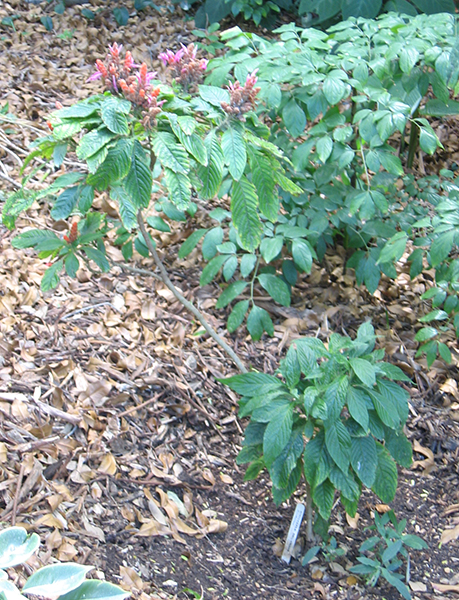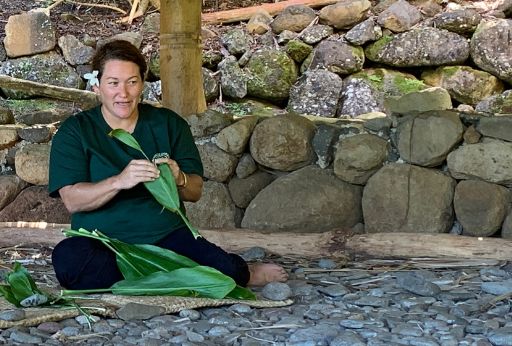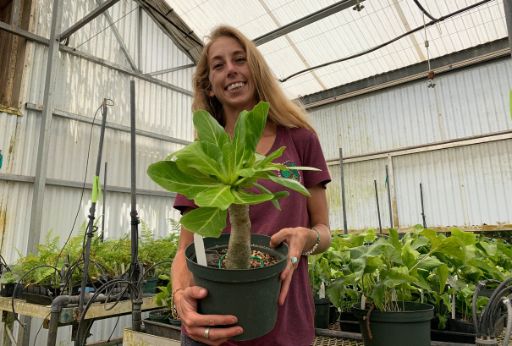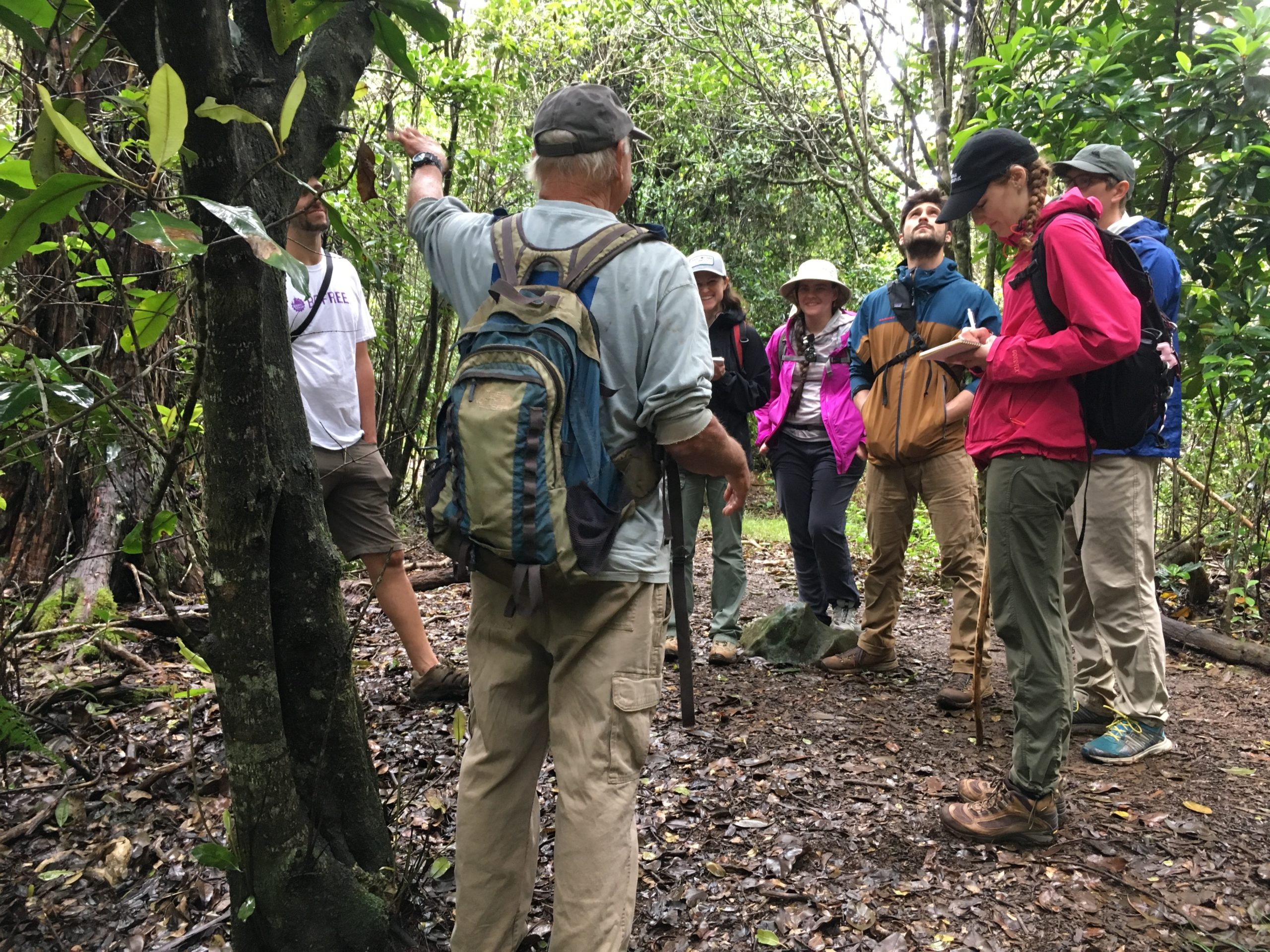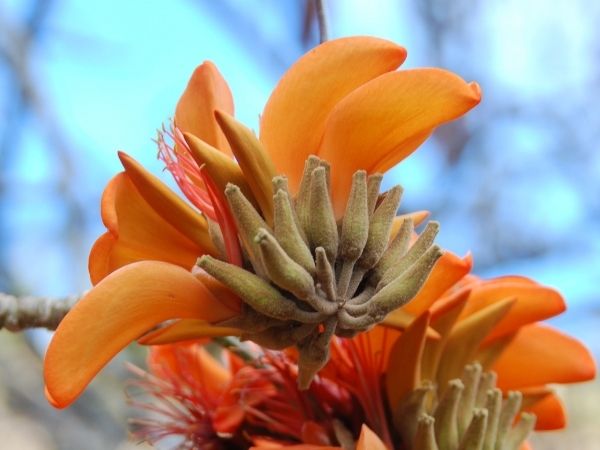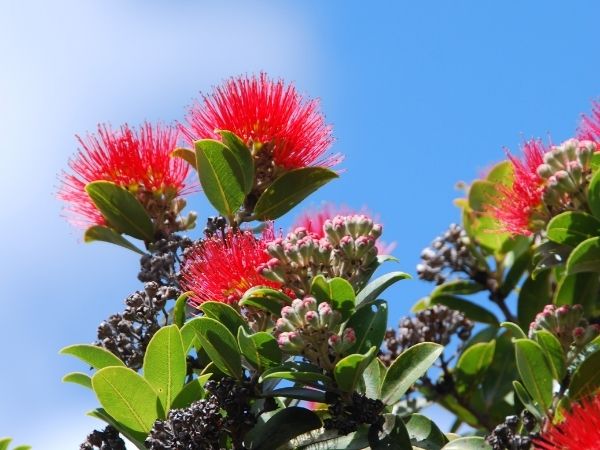Tropical Plant Database - Plant Details
Justicia candicans
Click on any heading above to view more information about this plant
Conservation Status
- IUCN: Not Evaluated
- USFWS: None
Family: ACANTHACEAE
Genus: Justicia
Species: candicans
Species Author: (Nees) L. D. Benson
Synonyms: Justicia candicans var. subglabra
Genus: Justicia
Species: candicans
Species Author: (Nees) L. D. Benson
Synonyms: Justicia candicans var. subglabra
Red Justicia is a perennial shrub with upright spreading stems and medium green oval leaves. Both stems and leaves are covered with hairs. Bright red to orange bracts enclose the pink, tubular flowers to 1 inch long at the stem tips.
Justicias can be the anchor for attracting hummingbirds to a Southwest landscape. Their bright, tubular flowers bloom for extended periods of time, welcoming hummers and other nectar-feeders to gardens. Flower colors range from yellow to deep red. Justicias’ green foliage contrasts well with gray desert-adapted plants.
Red Justicia is a native of Arizona and adjacent Mexico.
With long, colorful, tubular flowers, Justicias are a hummingbird's delight. These semi-evergreen shrubs bloom throughout the year, inviting hummingbirds into the urban wildlife garden.
Rufous hummingbirds (Selasphorus rufus) travel from Mexico to Alaska and back, making the longest bird migration on earth as measured in body lengths (~48,600,000 body lengths) of any bird. For a rufous hummingbird, 2.5 g of fat might sustain a flight distance of about 1095 km (650 miles) with no wind. Thus, a 4320 km breeding to wintering migration (southern Alaska to central Mexico) might require four flight segments with stopovers for refueling. (Calder in press).
Plains of Sonora Corridor are one of the three potential spring (northward) nectar corridors vital for hummingbirds’ survival. Red Justicia grows on the plains of Sonora Corridor and it is an important floral resource for hummingbirds. During migration, hummingbirds are dependent upon reliable patches of flowering resources along the corridors they travel in order to meet their energetic requirements and survive the trip. In general, the smaller the bird, the smaller its fuel (fat) supply and the shorter its distance endurance on that fuel (Calder in press). Therefore, hummingbirds must break long migrations into segments, with refueling stops en route. The numbers and species of hummingbirds present at any given site vary greatly with season as important nectar plants initiate or terminate flowering. Habitat conversion and fragmentation threaten rufous hummingbird stopover sites along their migratory corridors. Knowledge of migration routing and timing is essential for insuring the persistence of this important pollinator and the pollination services it provides. (Van Devender et al. in press).
Rufous hummingbirds (Selasphorus rufus) travel from Mexico to Alaska and back, making the longest bird migration on earth as measured in body lengths (~48,600,000 body lengths) of any bird. For a rufous hummingbird, 2.5 g of fat might sustain a flight distance of about 1095 km (650 miles) with no wind. Thus, a 4320 km breeding to wintering migration (southern Alaska to central Mexico) might require four flight segments with stopovers for refueling. (Calder in press).
Plains of Sonora Corridor are one of the three potential spring (northward) nectar corridors vital for hummingbirds’ survival. Red Justicia grows on the plains of Sonora Corridor and it is an important floral resource for hummingbirds. During migration, hummingbirds are dependent upon reliable patches of flowering resources along the corridors they travel in order to meet their energetic requirements and survive the trip. In general, the smaller the bird, the smaller its fuel (fat) supply and the shorter its distance endurance on that fuel (Calder in press). Therefore, hummingbirds must break long migrations into segments, with refueling stops en route. The numbers and species of hummingbirds present at any given site vary greatly with season as important nectar plants initiate or terminate flowering. Habitat conversion and fragmentation threaten rufous hummingbird stopover sites along their migratory corridors. Knowledge of migration routing and timing is essential for insuring the persistence of this important pollinator and the pollination services it provides. (Van Devender et al. in press).
.svg)
